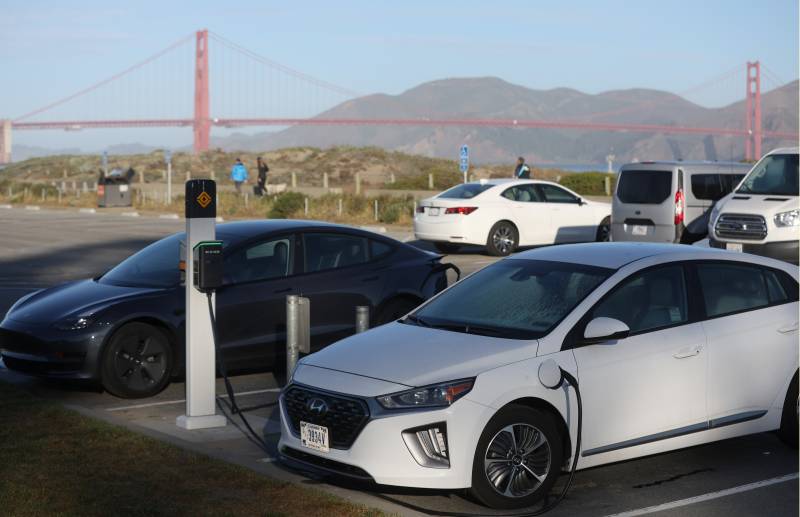Reaching the 100% goal by 2035 will mean overcoming very practical hurdles, notably enough reliable power and charging stations.
California now has about 80,000 stations in public places, far short of the 250,000 it wants by 2025. The Alliance for Automotive Innovation, which represents many major carmakers, warned that a lack of infrastructure, access to materials needed to make batteries, and supply chain issues are among the challenges to meeting the state’s timeline.
The new commitment came as California works to maintain reliable electricity while it moves away from gas-fired power plants in favor of solar, wind and other cleaner sources of energy. Earlier this year, top California energy officials warned the state could run out of power during the hottest days of summer, which happened briefly in August 2020.
That hasn’t happened yet this year. But Newsom, a Democrat, is pushing to keep open the state’s last-remaining nuclear plant beyond its planned closer in 2025, and the state may turn to diesel generators or natural gas plants as a backup when the electrical grid is strained.
Adding more car chargers will put a higher demand on the energy grid.
Ensuring access to charging stations is also key to ramping up electric vehicle sales. The infrastructure bill passed by Congress last year provides $5 billion for states to build charges every 50 miles along interstate highways.
Newsom, meanwhile, has pledged to spend billions to boost zero-emission vehicle sales, including adding chargers in lower-income neighborhoods. The new rules approved by the air board say that the vehicles need to be able to travel 150 miles on one charge.
Driving an electric vehicle long distances today, even in California, requires careful planning about where to stop and charge, said Mary Nichols, former chair of the California Air Resources Board. The money from the state and federal government will go a long way toward boosting that infrastructure and making electric cars a more convenient option, she said.
“This is going to be a transformative process, and the mandate for vehicle sales is only one piece of it,” she said.
Though hydrogen is a fuel option under the new regulations, cars that run on fuel cells have made up less than 1% of car sales in recent years.
Both the state and federal governments have rebates for thousands of dollars to offset the cost of buying electric cars, and the rules include incentives for carmakers to make used electric vehicles available to people with lower and middle incomes.
Over the past 12 years, California has provided more than $1 billion in rebates for the sale of 478,000 electric, plug-in or hybrid vehicles, according to the air board.
This story includes reporting from KQED’s Kevin Stark.

